ISSN 2410-5708 / e-ISSN 2313-7215
Year 11 | No. 31 | June - September 2022
© Copyright (2022). National Autonomous University of Nicaragua, Managua.
This document is under a Creative Commons
Attribution-NonCommercial-NoDerivs 4.0 International licence.
Behavior of Hemoglobin Fractions in healthy adults by HPLC
https://doi.org/10.5377/rtu.v11i31.14290
Submitted on November 15, 2021 / Accepted on April 25, 2022
Ligia Lorena Ortega Valdés
Master in Clinical Epidemiology
Universidad Nacional Autónoma de Nicaragua, Managua
Instituto Politécnico de la Salud (POLISAL)
https://orcid.org/0000-0001-5564-4696
Jairo Vanegas López
PhD in Public Health
Universidad de Santiago de Chile (USACH)
Facultad de Ciencias Médicas
https://orcid.org/0000-0001-5281-483X
Daniela Magaly Ruíz Saldívar
Master in food processing
Universidad Nacional Autónoma de Nicaragua, Managua
Instituto Politécnico de la Salud (POLISAL)
Section: Health and Social services
Keywords: Hemoglobin fractions, Hemoglobin A1,A2, HPLC, holding time.
Abstract
The blood is composed of hemoglobin that functionally allows cellular respiration in turn the structure of hemoglobin is highly specialized and its measurement is decisive to know the state of health of the individual beyond routine analyzes. Normally hemoglobin electrophoresis at alkaline pH is used to determine fractions however HPLC is worldwide accepted as the confirmatory method. (Ondei, Zamaro, Mangonaro, Valéncio, & Bonini-Domingos, 2007). In this research, the fractions of hemoglobin were quantified by HPLC using the D-10 equipment of BioRad to 158 apparently healthy subjects, using exclusion criteria and leaving 72 on which the percentages of hemoglobins were analyzed, the results were 96.03% for Hb A1, 2.92% for Fraction A2, 0.73% of Fetal Hb and 5.32% for Hb A1c.These results are similar to those made in other countries. Regarding hemoglobin A2 there was a decrease according to age and in women between 30 to 40 years showed the highest averages 1.4% while the male of 41-51 years reported lower values than women 0.76%. The HPLC method turned out to be a very stable procedure of rapid realization and allows the classification in fractions of Hb obtaining subfractions and variants of normal and abnormal hemoglobin. This research allows us to stop the neonatal screening tests carried out in Nicaragua and is the basis for the continuation of research on hemoglobins.
Introduction
Through a complete blood count it is possible to determine the figures of hemoglobin present in the blood, without specifying the breakdown into fractions. The report offered by a complete blood count indicates the concentration of hemoglobin in grams per deciliter and helps to understand the proportion of hemoglobin according to the erythrocyte-plasma ratio, an essential assessment for the interpretation of anemia or polycythemia. On the other hand, the fractions that make up hemoglobin are considered a special test and can be analyzed using the HPLC method, Zamaro et al, 2001). This method is considered a reference for the investigation of specific proportions of the hemoglobin fractions, its sensitivity and specificity being verified, in Nicaragua, it is not carried out as a screening or as a research method due to the lack of equipment in public and private laboratories. Every individual has 3 normal hemoglobin fractions called Hemoglobin A1 (HbA1), Hemoglobin A2 (Hb A2) and Fetal Hb (Hb F), these fractions are of great importance when evaluating hematological alterations in hemoglobinopathies and thalassemias, Nogueira dos Santos, 2011).
In Nicaragua, the behavior of normal hemoglobin fractions in the adult population has not been studied, nor has the percentage amounts of their reference values been analyzed from this area. This research proposes as a first finding the analysis of hemoglobin fractions in normal adults from 19 to 81 years of age in the city of Managua. This evaluation makes sense from the genetic and hematological point of view, since when judging the behavior of the fractions in a random group, abnormal findings can be found that indicate a certain abnormal distribution or that generate clinical suspicion in the population; Marc Soler Pont, Mercè Timon (2014), however, in order to discover an initial behavior leads to a comparison with other studies carried out in neighboring countries.
This evaluation will facilitate the understanding and later interpretation of abnormal results in the same national population that correspond to those age groups. Although, it is true that the sample is small N: 158 individuals, the sensitivity of the HPLC method used enhances the importance of the study. The Bio-Rad D-10TM Dual Program is a test system that uses ion exchange high performance liquid chromatography (HPLC) for the chromatographic separation of hemoglobins A1, A1c, A2, F and other hemoglobin variants that may be present in human blood.
When evaluating a normal adult, specific fractions Hb A : 95-98% should be found. Hb A2: 2-3%, Hb F : 0.8-2% Hb S, E and C absent. Hamid G (2013) In infants and children the F, in the newborn 50-80%, Hb F from 6 to 8 months: 8%, fetal after 6 months of 1-2%.
The Bio-Rad D-10TM Dual Program is a test system that uses ion exchange high performance liquid chromatography (HPLC) for the chromatographic separation of hemoglobins A1c, A2, F and other hemoglobin variants that may be present in human blood. (BIORAD-D10 Manual).
It is a fully automated procedure, which, using a small amount of sample, obtains the separation and quantification of hemoglobin variants F, A1c, A, A2/E, D and C, in just 6 minutes. The determination of the percentage of hemoglobin A1c, A2 and F, in human blood using HPLC can be used for different diagnostic or disease control purposes. Measurement of percentage hemoglobin A1c is effective for long-term glucose control in individuals with diabetes mellitus, just as measurement of percentage HbA2 and HbF are effective for long-term monitoring of patients with hemolytic anemia. β-thalassemia.
It is also capable of detecting abnormal hemoglobins and even giving a presumptive identification of these variants (S, C, D and E). Its use is exclusively professional for in vitro diagnosis (FDA, 2012). This system uses a set of calibrators for both normal and variant hemoglobins that guaranteed the success of the measurements in this work. The results in the reference range are not affected by Hb heterozygous variants (HbS, Hb C, Hb Lepore, Hb J) nor by HbF 10%, M. Vergara, A. Saez-Benito compared between modern HPLC methods, found that the presence of HbF between 3 and 8% does not affect the correlation or the difference in HbA1c values. The meaning of abnormal levels of these fractions may indicate diseases due to variant hemoglobins, or thalassemias. (Revista de Medicina 2020) it is known that hemoglobin variants can change the position of the curve to the left or to the right of that associated with normal hemoglobin A, in dilute solution sickle hemoglobin for example does not give functional difficulty, but in deoxygenated conditions this hemoglobin forms polymers that have a low affinity for oxygen. Wagner.M (2017)
Method
This research is of a descriptive, analytical and prospective type where 158 people of both sexes, adults who live in the city of Managua, are ambulatory individuals who declared feeling well on the day of blood sample collection, fasting. (See figure 1).
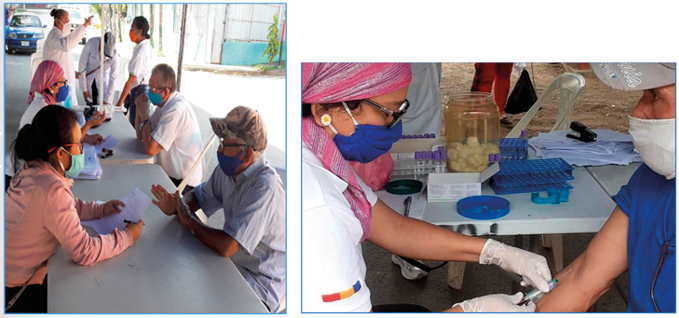
Figure 1. Interview with volunteers and sample collection
The ethical considerations of mandatory compliance were the invitation to spontaneously participate in the study, sign informed consent, delivery of results to the participants and confidentiality of the data by anonymity and coding. The participants were notified that the anonymous results could be published to contribute to the knowledge of these tests due to their valuable information at the country level, additionally they gave their consent for the use of photographs.
An invitation was made to participate in an open call fair to evaluate hemoglobin fractions, 73 men (46.2%) and 85 women (53.8%) were sampled. Once the evaluation of the fractions was carried out, the database was filtered and 86 people who did not present normal glycohemoglobin results were excluded. The final base of the analysis was carried out on 72 people only. The work team was made up of nurses, bioanalysts, doctors and students from both careers. (See figure 2).
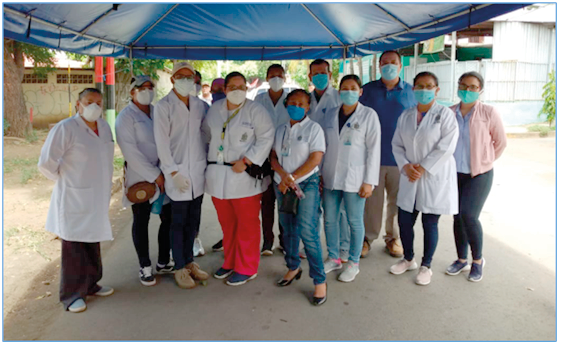
Figure 2. Multidisciplinary team participating in the 2020 fair
Results
After processing the data using the necessary calibrators and the appropriate methodology, a simple statistical analysis was carried out in order to know the behavior of the frequency of fractions by age and sex. Exclusion was made of those aberrant data that did not meet the normality criteria, finding the following values for normal hemoglobin fractions in both sexes: 96.03% for the Major Fraction A1, 2.92% for the Fraction A2, 0.734% for the fraction less than corresponds to Fetal Hb and 5.32 for glycosylated Hb or Hb A1c. (See figure 3)
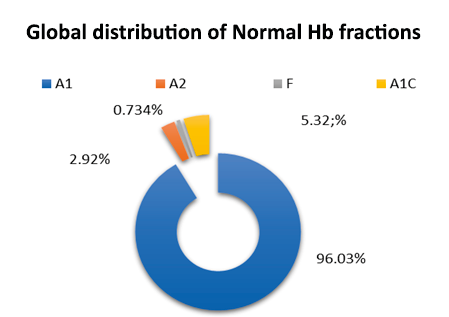
Figure 3. Global distribution of normal Hb fractions.
Source: Results of High Performance Liquid Chromatography, HPLC
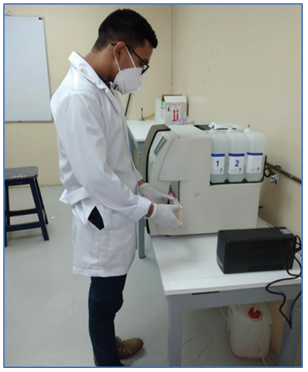
Figure 4. Analysis of samples BIO-RAD D10 equipment
Figure 4 shows the analyst during the assembly and verification. During the analysis of the samples, they underwent quality control and calibration following the manufacturer’s recommendations, the attached calibrators for glycosylated hemoglobin, normal A1, A2 and Fetal were used, to interpret the results, they were verified starting with the results of the controls and to the confirmation of the peaks presented, the results windows and the chromatograms following the specific orientations of reference values and magnitudes contained between the accepted reading thresholds. The retention times were also compared, finding a homology between the results of healthy people, see table 2. Hb A is detected in retention time intervals between 1.66 and 1.74, Hb A2 in intervals of 2.9 and 3.8 and for Fetal Hb it was 0.42 to 0.52, similar to the study carried out by Aradhana et Al, 2018.
Table 1. Percentage distribution of fractionated hemoglobins Managua 2020.
|
Age group |
Hb A1 |
Hb A2 |
Hb F |
HbA1c |
||||
|
Age |
M |
F |
M |
F |
M |
F |
M |
F |
|
19-29 |
96.45 |
96.54 |
3.18 |
2.7 |
0.7 |
1.1 |
5.36 |
5.2 |
|
30-40 |
95.85 |
96.15 |
2.95 |
3.028 |
0.7 |
1.4 |
5.9 |
5.4 |
|
41-51 |
96.7 |
96.4 |
2.51 |
2.76 |
0.76 |
0.85 |
5.36 |
5.34 |
|
52-62 |
95.87 |
96.3 |
2.985 |
3.1 |
0.7 |
0.7 |
5.49 |
5.45 |
|
63-73 |
95.12 |
95.45 |
3.08 |
2.95 |
0.7 |
0.7 |
5.57 |
5.03 |
HPLC results on human blood.
Discussion
When analyzing the ranges obtained in the study, Table 1, it is highlighted that among the main results of the total of 72 people evaluated, 100% presented adequate percentages of Hb A1 with values from 91.6-98%, from 0.9 to 3.9 for the Fraction of Hb A2 and 0.7 to 2% of Hb F, according to the literature these figures are normal when comparing the figures reported by the authors Morales M from Cuba, Han WP (2019) and Jihong Hu from China (2018), Giambona (2009) Ciesla .B. (2013) Williams (2007), Hamid G (2013), and McKenzie S (2002).
As previously expressed, Hb A was found to be normal, according to the analysis of fetal Hb, minimum undetectable figures were found in both men and women and maximum figures of 1% for men (45-year-old male) and 2% for in a 33-year-old woman.
In other investigations carried out, the establishment of reference values by Weng and Huang (2019) is cited, their figures range from 0-0.5% for male Fetal Hb and 0-1% in women, finding similarity between this investigation and that of Weng .
The Hb A1c presented an average of 5.29% in the ages of 19-29 years, where the male sex reported an average of 5.36, with a minimum of 5.1 and a maximum of 5.8, in the female the average is 5.2 and the value minimum was 4.7% with a maximum of 5.5
For the age of 30-40 years, the A1c presented an average of 5.1% in the ages of 30-40 years, where the male sex reported an average of 5.9%, with a minimum of 4.4% and a maximum of 5.4%, in for women, the average is 5.2% and the minimum value was 4.7% with a maximum of 5.5%.
When describing the distribution by age group, it was observed that for Hb A1 there is a decrease according to age in both sexes, for Hb A2 it increases in women with a slight decrease after 63 years and definitely decreases in men with a slight decrease. increase towards 63 years without reaching the initial figures of 19 years.
By age group, it was women between 30-40 years who showed the highest average values of Fetal Hb, with 1.4%, and men between 41-51 years who reported maximum values with 0.76%, their retention time was 0.448, in At all times, the retention times coincided with the literature consulted and with the manufacturer’s recommendations (see Table 2).
The determination of Hb A2 plays an important role when classifying or detecting a hemoglobinopathy and perhaps in some countries it has not been given the necessary importance (Giambona 2009) with its figures it is ´possible to detect small alterations that point to the diagnosis of beta thalassemia .
In all the values provided by the team, they found 2 types of results, those that were above those expected in glycohemoglobin Fraction A1c and those that showed other fractions such as Hb S and C, which were normal according to the parameters provided by the team. were considered appropriate to establish a baseline of ranges or reference intervals for the Hb A1, A2 and Hb F fractions.
Table 2. Results of the chromatograms found in the HPLC-BioRad D-10 equipment
|
Window Naming (Peaks) |
Retention Time (minutes) |
|
A1a |
0.20 |
|
F |
0.448 |
|
A1b |
0.285 |
|
Pico 3 |
1.515 |
|
A0 |
1.67 |
|
A2 |
3.07 |
|
A1C |
0.89 |
|
S |
4.1 |
|
C |
4.016 |
Source: Average results of patients participating in the fair
Table 2 shows the average times obtained during the sampling of the 72 healthy subjects, they are comparable with other studies carried out and with the times allowed by the manufacturer.
In another article, the abnormal results of this sampling will be addressed, since it seeks to obtain behavior for normal fractions or reference values.
Regarding the advantages and benefits of this research, it is important to point out that the HPLC method is one of the most relevant and chosen when choosing an appropriate methodology to determine the fractions essentially for Hb A1c. In this research, values are also cited. of glycohemoglobin in healthy subjects with average ranges from 5.32 in both sexes, from 0.8 to 5.8 in men and from 4-5.8 in women, with the understanding that these values would be considered values of normal behavior in healthy Nicaraguan subjects at the ages cited for this group analyzed from District II. In table 1 it is possible to delve into the behaviors found by age.
An important consideration in this study is the presence in the chromatograms of a fraction called A3 or Peak 3 that corresponds to the level of degraded hemoglobin that should ideally be less than 10% to report the value of glycated hemoglobin. It is formed due to post-translational modification of adult hemoglobin and levels increase as samples age or more of the hemoglobin is degraded; the level of post-translational modifications further increases with increasing blood glucose concentration within red blood cells, Gupta M (2016). See figure 5.
Gupta M, studied this fraction in healthy people in 2016 in research P3: Effect on HbA1c values by HPLC, this work is related to the present study because at the beginning of the research, when excluding groups, the phenomenon mentioned by Gupta. Figure 5 shows between 0.81 and 1.67 minutes over the aforementioned retention time.
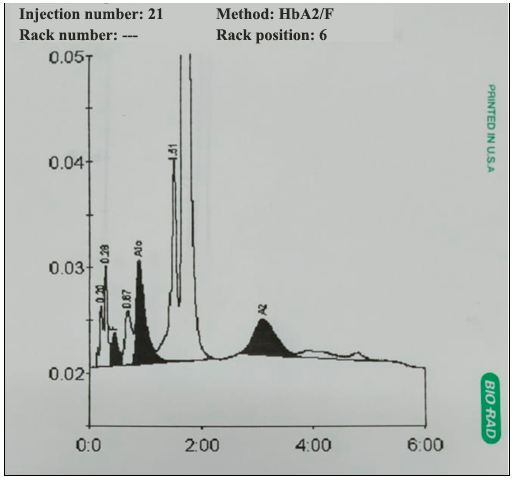
Figure 5. Chromatogram peaks.
Source: HPLC result of participants in POLISAL 2020 fair
An analyst should pay attention to an abnormality in the shape or retention time of the chromatographic peaks, caused by disproportionate HbA1c values. Any discrepancy should suggest a quantitative or qualitative hemoglobin abnormality, which should lead to its search and characterization. Depending on this, the HbA1c result may or may not be accepted. (Benito-Godino, and others, 2014).
Table 3. Results of the chromatograms found
|
Peak |
T0 Retention |
Height |
Area |
% Area |
|
A1a |
0.20 |
5762 |
18145 |
0.7 |
|
A1b |
0.28 |
9489 |
38572 |
1.4 |
|
F |
0.44 |
3065 |
23547 |
<0.8* |
|
LA1c/CHb-1 |
0.67 |
5095 |
42819 |
1.5 |
|
A1c |
0.88 |
9551 |
108196 |
5.6 |
|
P3 |
1.51 |
18827 |
142415 |
5.1 |
|
A0 |
1.67 |
436063 |
2314865 |
83.2 |
|
A2 |
3.10 |
3409 |
94892 |
3.1 |
|
Área Total |
2783450 |
Source: Results obtained from HPLC processing.
In all cases where peak 3 is found the permissible values according to studies carried out by Gupta should be a value of Area % less than 10%. In this figure, the glycohemoglobin value is accepted as adequate since its values are 5.65 and peak 3 was 5.1
According to Erkan Coban (2004) there are other factors that can affect Hemoglobin fractions, especially he shows that the measurement in healthy subjects with iron deficiency anemia affects Hb A1C levels, he evaluated the behavior of the fraction before and after treatment with Fe, finding that the figure decreases after treatment with iron.
HbA1c levels are affected by variant hemoglobins, hemolytic anemia, nutritional anemias, uremia, pregnancy, and acute blood loss.
According to Guo W, 2019 the turnover of red blood cells in bone marrow, quality, variation and related biological parameters such as age, sex, BMI and complications and induce peroxidation, iron deficiency accelerates glycation.
In the year 2020, Sakamoto studied the association of anemia and Hemoglobin with Hb A1c among non-diabetic workers in Japan, they found elevated Hb A1c among the anemic ones however the healthy ones with lower hb levels had higher Hb A1c levels suggesting that the interpretation of Hb A1c values should be carefully examined and assessed among the non-anemic.
2009 Little: expresses from his perspective that the influence of other hemoglobins on Hb A1c needs to be studied more deeply, Mphamed R (2018) suggests studying the relationship between the standard values of Hb A1C with the other fractions.
On the other hand, diabetes mellitus is a more frequent pathology than the population knows, however, referring to the properties of hemoglobin, including its degree of glycosylation (a non-enzymatic addition of glucose) that gives a derivative called Hb A1c, used to detect and monitor the long-term level of glucose increase in people with diabetes, for this reason this research is based on the fact of using a combined methodology offered by the HPLC system that allows obtaining both glycosylated and non-glycosylated Hb fractions, Little J(2013). See chromatogram1.
At the beginning of the investigation it was decided to put a partition criterion, since the D10 equipment was used, it was appropriate to divide the group of people studied into 2 subgroups, leaving only the researcher with those people who presented their normal glycosylated hemoglobin levels, since this would be An approximation to the normal behavior of hemoglobin fractions in Nicaraguan subjects.
Although electrophoresis is very useful for the quantitative separation of hemoglobins F, A2, S and C, it presents problems in the presence of other less common hemoglobin variants that migrate at the same speed as HbS. This drawback is perfectly resolved by HPLC, which, in addition to being a fully automated and fast method, is accepted worldwide.
In this regard, research carried out by Joutovsky A (2004) analyzed the retention times, the proportion of total hemoglobin (%) and the characteristics of the peaks, finding an imprecision (CV) mean (SD) retention time of 1.0 (0.7)% with no statistical difference compared to imprecision for normalized retention times, defines retention time as time in minutes from sample injection to the peak of the elution peak, from normal and common variant hemoglobin fractions. HPLC retention time is reliable, reproducible, and in many cases superior to conventional hemoglobin electrophoresis for the detection and identification of hemoglobin variants.
(Joutovsky, 2004). has recommended that individuals of all ethnic groups except Northern European Caucasians be screened for variant hemoglobins, all ethnic groups for β-thalassemia trait, and selected ethnic groups for α-thalassemia trait.
Regarding Hb A2 Vella, F. (1977). carried out a study that is interesting to cite since after this research it is proposed to carry out another study in order to know subfractions of Hb A2 given the distribution of black people in our country, especially on the North and South Atlantic Coast.
Vella describes the structure, properties and function and some biosynthetic and genetic aspects of Hb A2. The structural variants of Hb A2 are reviewed and their geographical distribution is presented. Hb A2, Hb A2-Flatbush (Joutovsky, 2004), and Hb A2-Babinga are characteristic of black populations and may have originated in West or Central Africa. Hb A2-Sphakia is characteristic of Canadian Amerindian populations and Hb A2-Indonesia of Indonesian/Malaysian populations. Hb A2-NYU has only been found sporadically and more frequently in people of Eastern European origin. Figuereido M (2015) considers it important to measure Hb A2 to diagnose beta-thalassemia trait Figueiredo, Maria. (2015).
Hb A2 can be measured by various laboratory methods, but these methods have differences in accuracy. Cation exchange high-performance liquid chromatography (HPLC), microcolumn chromatography, and cellulose acetate electrophoresis with elution are considered acceptable methods for diagnosing possible thalassemias, while cellulose acetate electrophoresis followed by scanning densitometry is not.
Acetate electrophoresis with elution depends on the training and experience of the laboratory technician who performs it, hence the importance of promoting the use of standardized HPLC with the use of normal and abnormal calibrators in addition to a rigorous run of the samples.
Both electrophoresis testing and microcolumn chromatography can give problems with co-elution of some Hemoglobin variants. Recent studies have confirmed the higher quality of automated HPLC in the measurement of Hb A2 compared to other methods, which is why this has become the method of choice, On the other hand, in automated HPLC, the measurement of Hb A2 is inaccurate when HbS is present.
As the amount of Hb S in percentages is related to the degree of inaccuracy, levels are higher in patients with sickle cell anemia (SCA) or Hb S/-thalassemia (S-Thal) than in sickle cell trait. The amount of Hb A2 does not indicate being a carrier of thalassemia trait but it does make us suspect using the clinic and the relevant results of the blood count as well as imprecise symptoms that make the doctor suspect when Hb A and beta gene variants are found together.
Conflict of interest and Acknowledgments
This research has no conflict of interest on the part of any of its authors.
Thanks to the FPI Funds of the UNAN Managua for financing this research project, whose final result was an agreement with the La Mascota Children’s Hospital, who are undergoing the evaluation of pediatric samples in suspects of suffering from hemoglobinopathies. Thanks to the company DIALMED Nicaragua for the donation of part of the material used in this Health Fair.
Conclusions
Hemoglobin fractions were determined in healthy subjects, finding 96.03% for the Major Fraction A1, 5.32% for Hb A1c, 2.92% for Fraction A2, 0.734% for the minor fraction that corresponds to Fetal Hb. It was found that the HPLC method turned out to be a very stable procedure that is fast to perform and allows the classification of Hb fractions, obtaining subfractions and variants of normal and abnormal hemoglobin. Hb A2 values were slightly higher than those cited in the international literature, exceeding 0.5% more than what was reported, which requires another investigation at the departmental level with a larger number of subjects to corroborate this data. The Fetal Hb showed in the woman of age of 30 years a higher percentage of 1.4% Hemoglobin A1 percentages are comparable with other authors, Hb A2 was affected with age, increases in women and decreases around 63 years, in men it was reversed a decrease was found and a slight increase towards 63 years.
Bibliography
Azevedo A, S. P., & V, T. (2010). Valores de referencia para hemograma en una poblaciónmetropolitana de Lisboa. Acta Medica Portuguesa, 597-604.
B.Amor, H, M., B, H., I, G., & R. (2012). Valores de referencia en 1000 adultos . Pasteur Tunis, 47-61.
Benito-Godino, A. S., Vergara Chozas, J. M., Marquez Ronchel, A., Barrero-Alor, F., Papay Ramirez, L., Coronado Alvarez, N. M., y otros. (2014). Multicentre evaluation og glycated haemoglobin (HbA1c) of Roche Diagnostics in Andalucia. Clinical Biochemistry, 4;4C.
BIO_RAD. (23 de septiembre de 2010). Manual de operaciones BIORAD D10 Quimica Clinica. Recuperado el 23 de agosto de 2020, de http://mdkhospital.com/documents/Hemoglobin%20A1c%20D10.pdf
Ciesla, B. (2007). Hematology in practice. Philadelphia: F.A.Davis Company /www.fadavis.com.
Figuereido, M. S. (2015). The importance of hemoglobin A2 determination. Revista Brasileira de hematologia e hemoterapia, 287-9.
Greer, J. P., Arber, D. A., & Gladel, B. (2014). Wintrobe's Clinical Hematology. Philadelphia: Lippincott.
Hamid, G. A. (2013). Clinical hematology. Yemen: ADEN UNIVERSITY.
IFCC Federación Internacional de Quimica Clinica. (2016). IFCC. SEQC .
J.M.Vergara, & A, S.-b. (s.f.). Comparación de los resultados de hemoglobina glicada por dos sistemas de cromatografia liquida HPLC. Journal Congreso España.
Joutovsky, M. (2004).
Kordys, M. E., Gallego, F., & Collino, C. (2014). Evaluación de métodos y establecimiento de Valores de Referencia hematológicos para la población del Gran Mendoza. Revista de la asociación Bioquímica Argentina, Vol.78 No2.
Ondei, L., Zamaro, P. J., Mangonaro, P. H., Valéncio, C. R., & Bonini-Domingos, C. R. (2007). HPLC determination of hemoglobins to establish reference values with the aid of statistics and informatics. Genetics and Molecular Research, 453-460.
Ramos, N. (2016). CATLAB informa. Hematología CATLAB, Butlleti No 66-Mes Gener , 1-11.
Rodríguez Romero, W. E., Villalobos Fernández, J., Salas Abarca, P., Hong Yuan, L., & Chui, D. H. (2012). Hemoglobina Raleigh en Costa Rica detectada omo un valor falsamente elevado de hemoglobina glicosilada. Rev Biomed , 23:33-38.
Soler Pont, M., & Timon, M. (2014). Que pasa cuando el HbA1c miente por defecto. Butlletí, vol 32 , 3.
Nogueira dos Santos, Cavalcante Barbosa, dos Santos, Silva Diniz, Lemos, & Pinheiro Goncalves, 2011. Triagem para hemoglobinas variantes em população adulta no Estado do Ceará Frequency of variant hemoglobins in the adult populations of State of Ceará Universidade Federal do Ceará. Correspondência: Thayna Nogueira dos Santos. Rua Paraná, 700. Apt. 102 – Demócrito Rocha. Fortaleza-CE. Tel.: (55-85) 88646683. E-mail: thayna_n@hotmail.com(2011)
Annexes
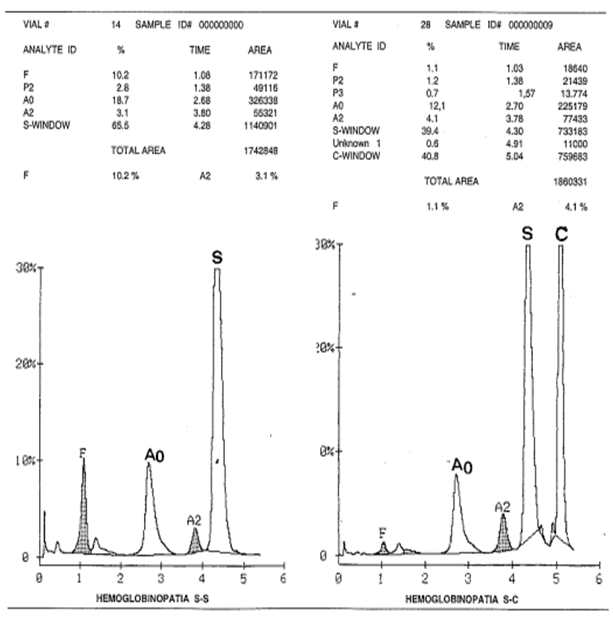
Figure 1. Chromatograms with variant hemoglobin results.
Taken from: First evaluation of the Variant haemoglobin analyzer Bio-Rad. Available at this link.
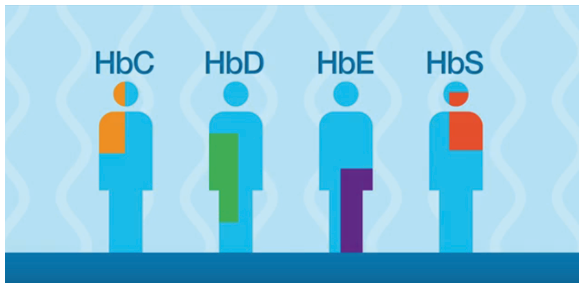
Figure 2. Fractionation of hemoglobins using Equipment D-10 for variant fractions.
Taken from BIORAD
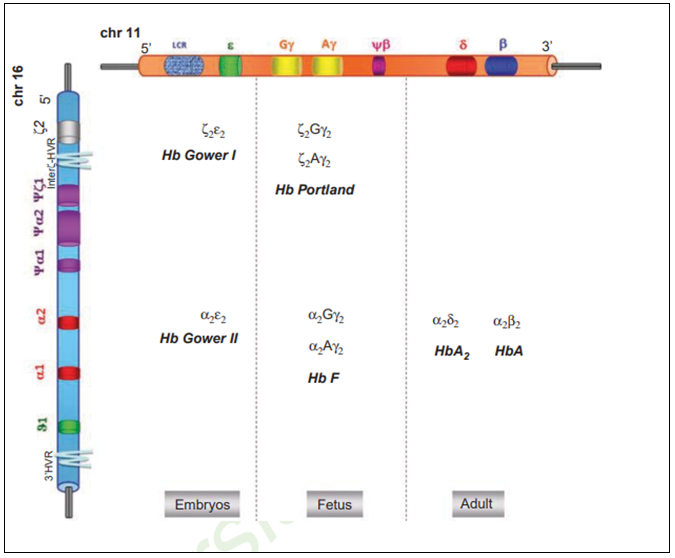
Figure 3. Human hemoglobin genes.
Source: (Greer, Arber, & Gladel, 2014)